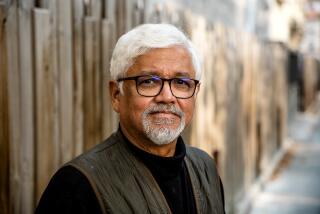Mortimer Sackler dies at 93; arts patron was co-owner of Purdue Pharma
- Share via
Dr. Mortimer D. Sackler, the psychiatrist who with his brothers bought a small pharmaceutical company and turned it into a major player in the industry by developing the powerful and controversial painkiller OxyContin, died March 24 in Gstaad, Switzerland, where he kept one of his many homes. He was 93.
Sackler used the profits from his company, Purdue Pharma, to become a major donor to the arts and universities. Among the beneficiaries of his largesse were New York’s Metropolitan Museum of Art, Columbia, Oxford, Edinburgh and Glasgow universities, London’s Tate Gallery, the Royal College of Art, Paris’ Louvre and Berlin’s Jewish Museum.
Sackler, his older brother Arthur and his younger brother Raymond were all working at the Creedmoor state psychiatric hospital in New York in 1952 when they purchased Purdue Frederick Co., a small pharmaceutical firm in Greenwich Village with a handful of employees and about $20,000 in annual sales.
The company, renamed Purdue Pharma and now headquartered in Stamford, Conn., struggled along for nearly three decades with a handful of minor products, including the laxative Senokot, the earwax remover Cerumenex and the antiseptic Betadine.
In the late 1970s, doctors at St. Christopher’s Hospice in London asked the Purdue subsidiary Napp Pharmaceuticals to develop a form of morphine that could be ingested as a pill rather than being administered intravenously, as was the practice at the time.
The company developed a formulation of oxycodone that could be ingested orally and introduced it as MSContin in 1984. That drug had yearly sales of about $170 million during its peak usage in the 1990s.
But MSContin and similar drugs were relatively short-acting, and patients -- particularly those recovering from surgery or suffering from arthritis, back injury or cancer -- wanted something that lasted longer, allowing them to sleep through the night or work during the day. Purdue researchers developed a time-release version of the drug, in which the active ingredient was encapsulated in small beads that dissolved slowly in the stomach and intestines. It was introduced as OxyContin in 1995. By 2001, yearly sales of the drug had reached $3 billion and accounted for 80% of Purdue Pharma’s sales.
But the drug became controversial when addicts discovered that they could grind it up to break the time-release coating and snort the powder for a quick high. Many deaths occurred as a result, and the drug had a large black market distribution, particularly in poorer regions, where it became known as “hillbilly heroin.”
The Sacklers were never implicated in any wrongdoing, but the company was fined for misleading doctors and patients by claiming that the formulation made the drug less likely to be abused. The company has been attempting to develop an abuse-resistant form of the drug.
Mortimer David Sackler was born Dec. 7, 1916, in Brooklyn, the son of Jewish immigrants from Poland and the Ukraine. He graduated from New York University but began his medical training at Anderson College of Medicine in Scotland because, he later wrote, quotas limited the number of Jews who could enroll in the U.S. He received his degree from the Middlesex University School of Medicine in Waltham, Mass.
His research was on the biology of psychiatric illness, but his greatest contribution probably came from the establishment of psychobiology research and training institutes at Cornell University, Columbia and four schools abroad.
Sackler’s first two marriages ended in divorce. He is survived by his third wife, Theresa, whom he married in 1980; his brother Raymond of Greenwich, Conn.; five daughters, Ilene Sackler Lefcourt of Manhattan, Kathe Sackler of Weston, Conn., and Samantha Hunt, Marissa Sackler and Sophie Sackler, all of London; two sons, Mortimer D.A. Sackler of Manhattan and Michael Sackler of London; 10 grandchildren; and two great-grandchildren.
thomas.maugh
@latimes.com
More to Read
Sign up for Essential California
The most important California stories and recommendations in your inbox every morning.
You may occasionally receive promotional content from the Los Angeles Times.










